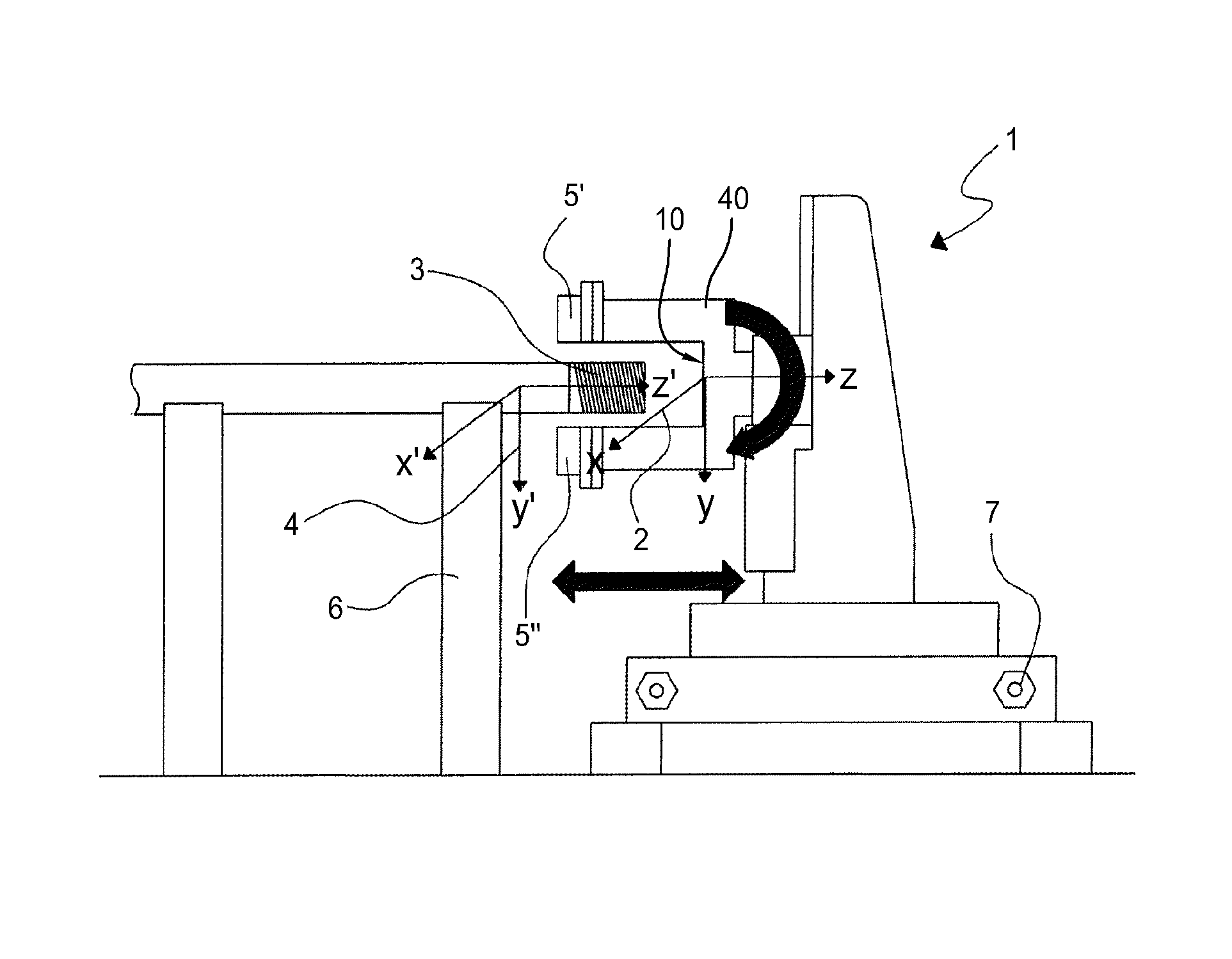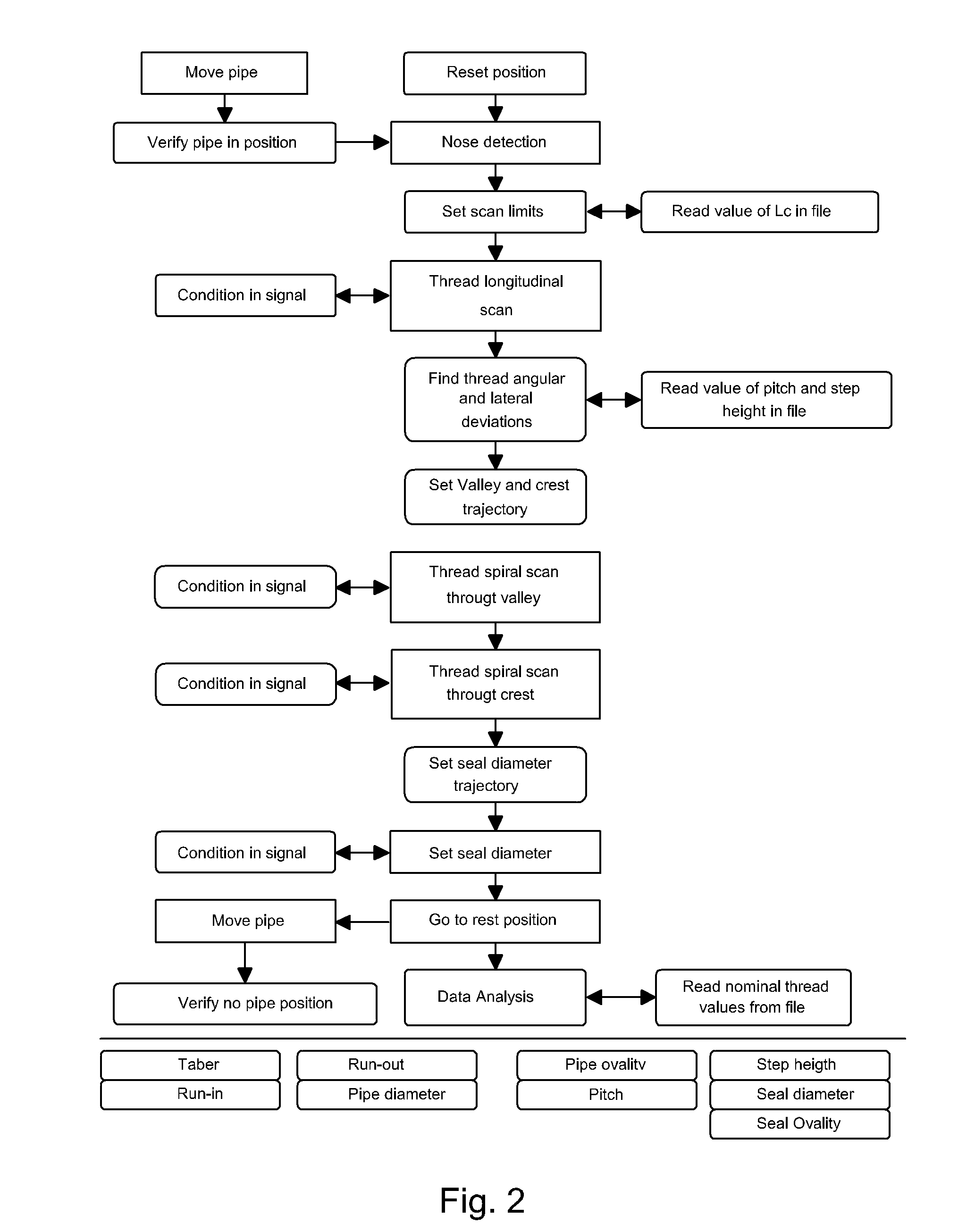Measuring device of thread parameters for threaded joints
a technology of measurement device and threaded joint, which is applied in the direction of speed measurement using gyroscopic effects, image data processing, amplifiers, etc., can solve the problems of increased difficulty, difficulty in achieving precision and repeatability of measurements, and additional difficulties
- Summary
- Abstract
- Description
- Claims
- Application Information
AI Technical Summary
Benefits of technology
Problems solved by technology
Method used
Image
Examples
Embodiment Construction
[0053]The terms “approximately,”“about,” and “substantially” as used herein represent an amount close to the stated amount that still performs a desired function or achieves a desired result. For example, the terms “approximately,”“about,” and “substantially” may refer to an amount that is within less than 10% of, within less than 5% of, within less than 1% of, within less than 0.1% of, and within less than 0.01% of the stated amount.
[0054]In the disclosed embodiments, reference is made to a pin of an oil or gas pipe. However it may be understood that embodiments of the disclosure may be applied to any other similar threaded objects, such as screws or similar objects. All these kinds of objects, at a certain stage of the measurement method, may be coated, using any type of coating technology. In certain embodiments, the coating may be a dry coating but, in alternative embodiments, other types of materials may be used as coatings, depending on the function to be achieved by the coati...
PUM
 Login to View More
Login to View More Abstract
Description
Claims
Application Information
 Login to View More
Login to View More - R&D
- Intellectual Property
- Life Sciences
- Materials
- Tech Scout
- Unparalleled Data Quality
- Higher Quality Content
- 60% Fewer Hallucinations
Browse by: Latest US Patents, China's latest patents, Technical Efficacy Thesaurus, Application Domain, Technology Topic, Popular Technical Reports.
© 2025 PatSnap. All rights reserved.Legal|Privacy policy|Modern Slavery Act Transparency Statement|Sitemap|About US| Contact US: help@patsnap.com



